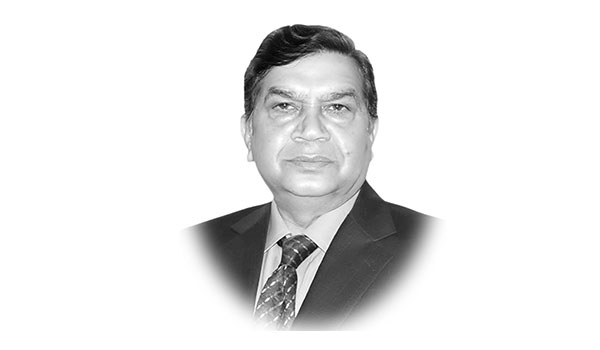Neglected valuable heritage of Rawalpindi city
BEFORE the nationalisation of educational institutions by the 1st PPP government in 1972, most of the schools and colleges in Rawalpindi city were managed by the semi government and voluntary organisations such as Cantonment Boards, Christian Missions and Non-Governmental Organisations, on self-help basis.
Most of these institutions were established by Christian, Hindu and Sikh voluntary organisations before the partition of India.
There were a few educational institutions that had been established by the Muslim voluntary organisations as well, such as the schools and orphanages run by Anjuman Faiz-ul-Islam, established by Mian Muhammed Hayat Bakhsh, the Sir Syed Ahmed Khan of the Potohar region.
After the partition of India, the control and management of the educational institutions, established by Hindus and Sikhs, was handed over to the Muslim voluntary organisations.
Government Muslim Higher Secondary School Saidpur is among the most prominent educational institutions established by the non-Muslim charitable organizations before the partition of India.
A small religious school was established to cater to the educational needs of the local Sikh community in 1813, during Sikh rule in the Punjab.
After the conquest of the Punjab by the British, the school was given the status of a high school.
In the beginning of the 20th century, the school was shifted to its present campus, spread over more than 100 kanals of land, to accommodate more students belonging to other religious communities, including Hindus and Muslims.
Founded as Khalsa School, it became the largest educational institution in the Rawalpindi district.
The foundation stone of the current building was laid by Sir Michael Francis O’dwyer, Governor of the Punjab.
Sardar Sohan Singh and Sardar Mohan Singh, grandsons of Rai Bahadur Sardar Sujan Singh, played a key role in the construction of the building.
The E-shaped building was constructed in the Anglo-Indian architectural style, with three vast playgrounds and a hostel for students, belonging to outstations.
Stair-towers in the main building added to its majestic look. In the centre of the complex is a hall that is said to be constructed for performance of religious rituals by the Sikh community.
The school building was completed in a year, under the supervision of Sardar Sohan Singh and Sardar Mohan Singh, from the donations by Sikhs and Hindus to the tune of Rs 16,919.
Maharaja of Faridkot Brijindar Singh, Ram Singh Sawahney Sardar Mohan Singh and Sardar Sohan Singh, and the Rachunath Mandir Committee donated Rs1,000, Rs 500, Rs 6,000 and Rs1,600, respectively.
In 1948, the school was handed over to Syed Niaz Ahmed Tirmazi, in lieu of a large school he managed in Aligarh.
The school renamed as Muslim High School, remained a private institution till the nationalization of educational institutions in 1972.
After Khalsa School, Christian High School Fawara Chowk is the oldest educational institution in Rawalpindi, established during the British rule in the beginning of the second quarter of the 19th century by the Christian Presbyterian Mission USA.
The school has functioned uninterrupted since its inception almost two hundred years ago. Gordon College Rawalpindi, another historical educational institution established by the Presbyterian Mission, started functioning in the premise of Christian School in the last quarter of the 19th century.
In 1893, the college was shifted to its present location on Liaquat Road to function as an independent intermediate college.
Records show that the first graduate from the college was Ishar Das in 1904.First Muslim graduate was the late Justice Din Muhammad, former Governor of Sindh.
One teacher, later Principal, who best represents that history of Gordon College is; Dr Ralph Randle Stewart, who joined the college in 1911 to teach elementary Botany and Zoology to pre-medical students.
He served as the Principal of the college from 1934 to 1954. Countless number of college students rose to higher positions as bureaucrats, lawyers, judges, politicians and defence forces officers.
Some of the notable alumni of the college include: Chief of the Army Staff General Qamar Javaid Bajwa, former Prime Minister Shaukat Aziz, President of Azad Kashmir Barrister Sultan Mehmood Chaudry, former President of Azad Kashmir Saddar Masud Khan, and many prominent artists and journalists like Nayyar Kamal, Rahat Kazmi, Azhar Lodhi, etc.
The names of two renowned Indian actors, Sundar Shayam and Balraj Sahini, are also included among the illustrious Gordonians.
The honour of being the 3rd oldest school in Rawalpindi goes to the Government Dennys High School Kashmir Road Saddar, which also has the distinction of once being a symbol of Hindu-Muslim unity in Rawalpindi.
The school was established in 1881 by the Controller of Military Accounts Colonel Dennys, with the help of well-off Hindu and Muslim families who lived on Dalhousie Road (renamed as Kashmir Road).
The land was leased to the school by the Military Estate Office (MEO) for 8 Annas (50 Piasas) per month.
After its establishment, the school functioned under a Management Committee constituted by the Cantonment Board.
Among others, Dr Datt, Seith Adam Jee Mamoojee, Lala Tan Sukh Rai, Babu Shoshi Bhooshan Chatterjee and Seith Nusarwanjee Jamasjee, occupied key posts in the Managing Committee of the school.
The school’s building was completed in 1899 under the management of Seith Adam Jee Mamoojee and Babu Shoshi Bhooshan Chatterjee with donations from local elite families totalling Rs7,750.
The long list of the prominent alumni of the school includes the names of former Vice Chief of the Army Staff, General Muhammad Yousaf Khan, former Chief Commissioner Qazi Farooq, former Governor of the Punjab, General Raja Saroop, World Bank Consultant Sat Goil and Olympian Naseer Bunda.
After their nationalization in 1972, Muslim High School, Mission School, Dennys School and Gordon College Rawalpindi have been functioning as a government institution under Ministry of Education, Government of the Punjab.
Unfortunately, these institutions, which once ranked among the premier educational centres in the country, rapidly started declining with regard to their academic standards, administration and discipline, etc after their nationalization in 1972.
—The writer is contributing columnist based in Islamabad.










